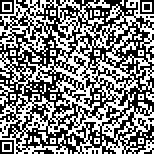| 摘要: |
| 利用光学显微镜和透射电镜对从青岛胶州湾海水样品中分离的一种微型鞭毛藻进行了超微结构和分类学研究。结果表明, 该藻为里氏金色藻(Chrysochromulina leadbeateri Estep, Davis, Hargraves et Sieburth)。其特征为:细胞呈球形, 直径4—6μm, 两条鞭毛略不等长, 分别为8—10μm和12—16μm。一条定鞭能够卷曲, 完全伸展后约20—30μm。细胞外被两层不同类型的圆形鳞片, 都具十字形中央。外层鳞片表面有放射状细纹, 内层鳞片在周边环上有25—30 个穿孔。细胞一般有两个色素体, 每个色素体内有一个包埋的蛋白核。里氏金色藻曾在挪威沿岸形成大规模有毒藻华, 并引起养殖鱼类大量死亡。该种为我国的新记录种。
|
| 关键词: 里氏金色藻, 有毒藻华, 分类学 |
| DOI:10.11693/hyhz200906020020 |
| 分类号: |
| 基金项目:中国科学院知识创新工程项目, KSCX2-3-04-09 号 |
|
| TAXONOMY OF CHRYSOCHROMULINA LEADBEATERI (PRYMNESIOPHYCEAE), A TOXIC BLOOM-FORMING SPECIES ISOLATED FROM JIAOZHOU BAY, CHINA |
|
YIN Ming-Yan, HU Xiao-Yan, ZENG Cheng-Kui
|
|
Institute of Oceanology, Chinese Academy of Sciences
|
| Abstract: |
| The cells of Chrysochromulina leadbeateri from coast area of Qingdao were isolated. A unialgal culture was set up and the structural characteristics were observed under a light and electron microscopes. The cells are spherical in overall, measuring 4—6μm, with two flagella of slightly unequal length (8—10 and 12—16μm) and a haptonema (20—30μm) that often coils up. The cell surfaces are covered by two distinct types of scales arranged in two layers. Both scale types are circular and have a central pore with a crisscross. The outer layer comprises of morphologically simple scales in radiating ribs pattern; the inner layer scales are more complex and have one peripheral ring of 25—30 holes. The cells contain two golden-brown chloroplasts with a pyrenoid each. C. leadbeaeri was once considered responsible for a toxic bloom in Norway that killed tons of caged salmons. This is the first report in China.
|
| Key words: Chrysochromulina leadbeateri, Toxic algal-bloom-forming, Taxonomy |
